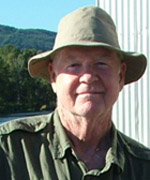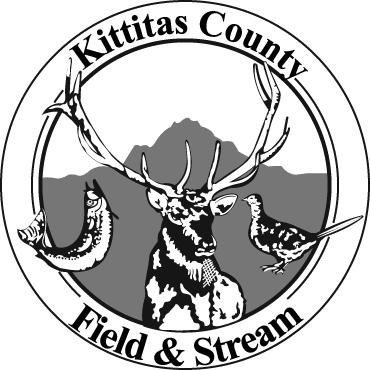Archive for June, 2013
Steve Shaw–Another Loss to our Community
Just about the time we were boarding our plane for St. Petersburg, Russia, in late May, Steve Shaw passed away. Three weeks later, I returned home to another of those empty places some people leave behind.
Not long after I returned to Paradise from decades in Colorado, late in the last century, I stumbled across the Kittitas County Field and Stream Club.
One of its officers was Maxine Shaw—Treasurer, as I recall. She had a great smile and an easy way of dealing with the grumpy old men who had been the face of the club for many of its first 75 years. Wilma Dloughy and Maxine were its first women officers.
Early on, at one of the club’s monthly meetings, I found myself sitting next to a young guy who smiled and nodded as Maxine gave her report. I said something to the effect of “You certainly know how to appreciate a Treasurer’s Report…” He smiled and said, “My mom just has a way with this. I like how she does her part.” I had just met Steve Shaw.
Each time our paths crossed, I had a feeling that I had known Steve forever. There was an ease about him, coupled with a drive for life and the pleasures it offered. I once asked him what his passions were. Without a pause, he said, “My family, anything outdoors and my store!”
A decade ago, I walked into a Steve and Reed Larsen conversation about the 63 year old One-Shot Antelope Hunt in Lander, Wyoming. I had been part of the Colorado One-Shot through the 1980s, and they chuckled at my angst over never making a Wyoming team for that granddaddy of One-Shots. That was about the time that Reed and Steve formulated their One-Shot story.
Reed will tell you that Steve was unaware of that oldest organized hunt in the US until they met in 1999, when Reed was a Charter TV rep. They bonded over their love of hunting. Each fall, the talk about the unique and rare hunting experience of the One-Shot Antelope Hunt grew a bit.
After years of passing on invitations, in 2004, Steve joined Reed as a guest One-Shot hunter. They headed to Lander for Steve’s first antelope hunt—each getting one of the licenses Wyoming Game & Fish allocates to the hunt. They bagged nice bucks, and Steve was hooked.
From that time, their friendship grew into a rich brotherhood.
It surprised no one that Steve fit right into that group of strangers in Lander. One of the more influential members of the Past Shooters Club was Reed’s father, Austin (Doc) Larsen. Doc took an immediate liking to Steve—a rare occurrence. In 2005, it was simply understood that the men were heading to Lander again, in an annual partnership.
To hunt in the One-shot for more than two years, Steve would need a team, since Reed was already a team member. Thus, in 2006, Steve was working to put a three-hunter team together—hoping to be one of the six teams selected from many applications, when Reed informed him that he had been appointed to the Sportsman Team. He would be a member of the Past Shooters Club by the end of the hunt, and could bring his own guests. That fall, under pressure, Steve bagged his antelope with one shot (only 50% of team members accomplish that).
As a member of the Past Shooters Club, Steve quietly helped the club with its 501c3 Water for Wildlife program funding water projects for wildlife across the West.
In 2009, for the first time, brothers Casey and Rusty Shaw were on a team with Clint Larsen. The Larsen and Shaw families became part of only a handful of multi-generational past shooters.
This year, on the Thursday of the hunt, the Chief of the Shoshone Tribe will eject a cartridge with Steve’s name on it from his rifle. It will be placed permanently in the One-Shot museum—an honor and tribute to the departed hunter.
My Old Man always said a man’s true character shows up when no one is looking and when he is inconvenienced by family. Steve’s son Casey passed along some thoughts. “[It was] just the way he did things… In 2006 dad had a bull tag in the Observatory. A couple days into the hunt he had been out hiking for the first few hours of daylight…only cows all morning. He had gotten back to his truck and was winding down taking off his boots. A group of hunters came by to chit chat. They had seen a nice bull first thing in the morning not far from where he had been. Dad decided to take one more hike…to work down a brushy draw that he hiked earlier. Tempted to just start at his current elevation, but knowing he should just put in the work, he went to the top of the draw. Sure enough, right at the top of the draw he threw a rock into the brush. A big 360+ bull ended up in the freezer and on the wall. He was always the kind of guy who would go just a little further and work a little harder than the rest.
“Growing up, all of us sons enjoyed the hills and frequently got ourselves in sticky situations—stuck in mud or snow—often in the middle of the night. Most teenagers would probably try to find a buddy to help them and avoid owning up to what they had done, but we always knew our first contact was going to be dad. Amazingly, he was never upset, he would just get out of bed, ask us where the truck or jeep was and what we needed to do to get it out. He might tease us later but he never got mad.”
At May’s NRA Banquet, I sat with Steve and Reed and Casey. They were family, and as I joined them I became family, too. I was in that easy place Steve Shaw carried with him—and passed along. Thanks, Steve…
[Copyright James L. Huckabay, 2013]
Comments Off on Steve Shaw–Another Loss to our Community
Nature’s Fireworks over Beijing at Night
We returned to Paradise, from our journey by rail through Russia, Mongolia and China, just in time for some lively showers and evening thunderstorms. It felt a bit like a “Welcome home!” after our travels, and a reminder of how much I have loved the excitement of lightning.
Many times over the years, I have noted that my love of thunderstorms and lightning probably led to my meteorology studies. Somewhere in there is my long-term fascination with the connection between human comfort and behavior, and lightning—nature’s “Alka-Seltzer of the air.” Near the end of our trip, I was loudly reminded of all that.
Our second night in Beijing, we watched a wave of thunderstorms light up the sky, and the huge city beneath it. Lightning filled the sky to the west of our little Double Happiness Courtyard Hotel. Minute by minute, dancing between the negative and positive charges of ground and cloud, the lightning drew closer and closer. It finally swept over and around us a bit after 11:00, neutralizing the electrical ion imbalances of a muggy, heavy evening. Literal sheets of rain washed pollutants from the air and scrubbed the streets and alleys of our historic Dongcheng District, northeast of Beijing’s center. We caught our breath as the excitement moved to the east.
The last time I saw a fireworks show like that was just a couple months over four decades ago, in Lawrence, Kansas.
As a grad student, the first meteorology class I taught at the University of Kansas was full of young people who saw no sense in studying weather. They argued that, since they drove air‑conditioned cars and lived and studied in climate‑controlled rooms, there was no need. They were totally insulated from Nature.
But this was lightning country, and in those nighttime storms, lightning would dash and sizzle and hang from cloud top to cloud top. I might lay in bed watching it for an hour or more. I loved it.
I explained to my modern, climate-controlled youngsters that the discomfort they felt with “dry” or “moist” air often had to do with electrical ions. In very dry air, especially with a warm wind, an excess of negative ions may build up, commonly causing irritability and short tempers. Water vapor molecules, on the other hand, may carry an excess of positive ions. Especially in warm air, high levels of water vapor—humidity—might make them fussy and uncomfortable, with a “leave me alone” attitude.
As luck would have it, that spring we had a week of very warm, windy, dry weather. Students squabbled over almost anything in our study rooms (“Do you HAVE to turn those *!^# pages so loud?”). It was great. Then, the night before an early‑morning lab with my “insulated” ones, a line of thunderstorms moved through. It was, perhaps, the best storm line ever; two and a half hours of fireworks. As it approached, drawing warm moist air in ahead of it, positive ions built up in our house. None of us could sleep. One by one, the kids drowsily wandered into our room. “What’s Wrong?” I’d ask. “I don’t feel good,” they’d say. “Well, what’s wrong, honey?” “NUTHIN’! I just don’t feel good… I can’t sleep.” As they huddled around the bed, each groaning in his or her own world, I turned my attention back to the show in the sky.
When the storm finally passed over us, at least a dozen lightning bolts crashed and exploded within a hundred yards of our house. As it moved off to the east, having sorted out all of those imbalanced ions, my tribe was asleep. Michelle conked out on the carpet near her mom, Nicole on the floor by her bed and Tim was sprawled across his bed with one foot on the floor.
My students were all yawning the next morning. “Just couldn’t sleep ‘til after the storm,” they said. “Not insulated enough, maybe,” I ventured.
Those Beijing fireworks were the perfect way to wrap up our amazing weeks abroad. At some level, it probably cleared our heads to weigh what we learned about the people, cultures, history and landscapes of the countries we traveled. And it is good to be back in Paradise.
[Copyright James L. Huckabay, 2013]
Comments Off on Nature’s Fireworks over Beijing at Night
About Thunderstorms and Tornadoes
No doubt you have taken note of the thunderstorms which have rolled through parts of our valley over the last few weeks. We are all paying attention to the tornadoes popping up in parts of the US almost daily. This is spring—this is weather time.
No matter where I see it or smell it, flashing lightning and the acrid ozone smell, lingering briefly behind it, take me back to being a small kid. And those hours-long lightning storms moving across the Kansas prairie are still with me from grad school days. That dance between negative and positive charges on ground or in clouds, and the neutralizing of atmospheric ions remind me that lightning is really the AAlka‑Seltzer@ of the air.
How I love lightning… and am fascinated by tornadoes.
I am carried right back to Lawrence, and the University of Kansas. There, in the early 1970s, I met Bob Brown. Bob was hooked on heavy weather—the heavier the better. I got caught up in his addiction the first time I met him.
I was working on a Ph.D. in geography and meteorology. Bob was after a Master=s degree in business administration. He had been an Air Force meteorologist, but was out of the Vietnam and Air Force business by the time we met. For giggles and cash, he worked with us in the Department of Geography and Meteorology as a teaching and research assistant.
Bob insisted that the atmosphere, and every individual storm or system within it, had its own life force—its own consciousness. He also believed storms had well‑developed senses of humor. To forecast the weather effectively, he said, you had to be willing and able to “feel” what the atmosphere had to tell you. The best forecasters, he said, were old Kansas farmers who heard the weather talk. I thought long and hard about that consciousness, that sense of humor and that “life force@ of storms. Years later, my best forecasts as a TV weatherman in Denver came when I really listened to the atmosphere.
One of our KU profs had a big federal contract to study tornado damage, to identify the safest place in a house during a tornado. It was great. We got to travel on that dime through much of the Midwest “tornado belt,” examining the carnage and learning about twisters.
I was fascinated by the power and damage of those storms. We saw things that seemed impossible. And we saw tornado humor.
The bark might be completely stripped off one tree‑‑and I mean completely‑‑while a tree ten feet away would look as if nothing had passed. A broom and individual broomstraws might be sticking THROUGH car windows.
A tornado flattened part of Lubbock, Texas. It hit in midafternoon, as school let out. A woman told us that she heard the roar of the tornado as her two kids hit the front steps. There was no time to get under the house, and a voice told her to get into the coat closet by the front door. When the terrifying shaking and roaring and crashing stopped, they got out. That closet was the only thing standing above floor level in the entire block. The woman said she found God in that closet. Probably still goes in there Sunday mornings.
Our funniest tornado story also happened in the Lubbock episode. Mobile home parks are often death traps, since the light metal boxes are not made to take such winds. One mobile home park was hit, but little damage was done. It seems a bachelor, the owner of a bright red Mercedes convertible, lived in the park. When he had a date, especially if she was pretty, he would drive around the park a couple times. He flaunted his women, money and shiny car at every chance. We found his totaled home upside down on his totaled car. No serious injury, but his was the only real damage in the park.
Looking at damage was interesting, but we always arrived after the tornadoes. More than anything, Bob wanted to see a tornado close up. He spent his spare time doing what he’d done for years—chasing storms. With the top down on his little Austin-Healey, he would intercept a line of severe thunderstorms and follow them into Nebraska or Missouri, hoping to see a funnel drop out of the bottom of some bulging cumulonimbus cloud. Bob often returned soaked to the skin with stories of crashing lightning, hail, and torrential rains. Over hundreds of hours and thousands of miles, however, he never saw a twister.
Bob got his MBA, and took a job with Ma Bell in Boise. One week after he drove his wife and baby out of Lawrence, we watched a tornado hang for ten minutes over the house he’d lived in for three years.
Tornadoes here in Paradise are highly unlikely—indeed almost impossible with that stable marine layer above us. But I thrill to our lightning storms. Sometimes I remember that, after this life, I intend to go fly with the tornadoes.
Happy almost summer…
[Copyright James L. Huckabay, 2013]
Comments Off on About Thunderstorms and Tornadoes
Hard Questions Answered
As you might imagine, from time to time, questions are posed to the Reecer Creek Rod, Gun, Working Dog & Outdoor Think Tank Benevolent Association. I believe this is because we have gathered some of the best minds in the Western Hemisphere.
Perhaps I get the hard ones, because I am willing to devote research time to finding answers to those outdoor questions with which others can only struggle.
A homey who wishes to remain anonymous followed up on a recent column by raising some interesting points. To wit: “I have long felt that groups of us—and even some individuals—can and do create weather, danger and other situations that society handles just with our thoughts. What is your opinion of the role of the mass media in this?”
It seems to me that, at some point, we gave over control of our health and well-being to the American Medical Association and its lackeys, the mass media. The media report some new outbreak of the flu—verified by some official-sounding medical association—and thousands of us dutifully fall ill with it and the rest line up for flu shots. Some official crackpot identifies tree mold as on the rise, gets the media to “report” it (along with a suggestion that a large number of people are allergic to these levels of tree mold), and people throughout the broadcast area start sneezing and wheezing. We pretend the media gives us all sides of issues so we can make considered judgments about our lives. Not so; the Daily Record is the only balanced media left.
Actually, now that I think about it, I have no opinion about that, homey.
“So you are going ‘steelhead’ fishing. What exactly are they, and how did they get that name?”
(Lois Love Brown, South Ellensburg)
I’m delighted to share my research on this, Lois. Simply, steelhead are sea-run rainbow trout. But it’s not that simple. They’re anadromous—meaning that they are “bi” (liking fresh water AND salt water). The whole thing started when a rainbow got large enough to develop a taste for ferrous minerals. It headed for the ocean and places where the underlying rock was rich in iron. The shrimp and salt-water prey of this first sea-run trout were very high in dissolved iron. That iron, in turn, was absorbed into the bony parts of the sea-run rainbow. By the time the first sea-run rainbow returned to fresh water, its bones, especially the skull, was nearly entirely iron. As others joined that first pioneer, they became exceptionally heavy, strong, fighting fish. Part of their beauty is the result of some of the iron leaking out through their gills, staining their sides with an almost iridescent red color. The first European to catch one of these fish did so accidently when he dropped his magnetic watch fob into the Columbia, and immediately found himself chained to a twelve-pound trout. The year was 1855, the man’s name was John Steele, and thus it became “steelehead.” Really, the fish is more appropriately named “ironhead,” but you know how biologists are. It also should be obvious to you why Washington Fish and Wildlife has outlawed the use of magnets in ironheading.
Roberto K. Pensepesca, Ellensburg, asks: “I know that males’ contribution to fish egg fertilization is called ‘milt,’ which is released over the female’s eggs to fertilize them. What is the source of this term, ‘milt’?”
An excellent question. Too little has been understood about this over the years, and I’m pleased to straighten it out now. In 1798, when the first fish hatcheries were being built, the idea of hatching and rearing fish in captivity, to then be released into the wild, was big news. During that time, the press was very cautious about using words which might titillate emotions of America’s good citizens. The first headline, “Fish Semen Spread Over Ova!” stirred up such an uproar, that the entire program was in danger of being scrapped. Biologists quickly hatched a new plan. Milton Harrison (who, you may recall, pitched in Erie, Pennsylvania’s first baseball game) was the man in charge of “milking” the males, so the semen became, euphemistically, “milt.” Following this same logic, ova became “suzanna” after the woman in charge of stripping the eggs from the females. Suzanna didn’t actually last long at that job, as she had great inner conflict over the whole idea of females giving up their eggs for science and became increasingly depressed. (While her career in the hatchery was short, she became widely known as the heroine of Stephen Foster’s song in honor of her stand for the female fish, “Oh, Suzanna.” But I digress.) The first headline using the new euphemisms for fish sex read, “Suzanna Covered By Milt At Fish Hatchery!” That was too much for those fine folk, and biologists decided just to call them eggs, or roe. The “milt” part stuck, however, and we still honor Milton by using it today.
As always, submit your hard-to-answer questions (of an outdoor nature, please) to the RCRGWD&OTTBA in care of this paper or to the blog. We are always pleased to share answers to the mysteries of the natural world.
[Copyright James L. Huckabay, 2013]
Comments Off on Hard Questions Answered







